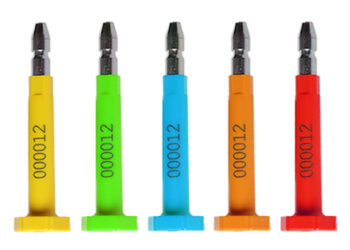ISO 17712 is an international standard that specifies requirements for mechanical seals used on containers, trucks, and other cargo-carrying units to provide evidence of tampering and unauthorized access. These seals play a crucial role in maintaining the integrity and security of transported goods throughout their journey. Proper handling and storage of ISO 17712-certified security seals are essential to ensure their effectiveness and reliability. This article outlines the guidelines and best practices for storing and handling these seals.
Storage Environment:
Security seals should be stored in a controlled environment that is dry, clean, and well-ventilated. Exposure to extreme temperatures, moisture, direct sunlight, and chemicals can degrade the seals’ materials and compromise their integrity. Ideally, the storage area should be within the manufacturer’s recommended temperature range, typically between -40°C to +60°C (-40°F to +140°F).
Avoid Physical Damage:
Prevent any form of physical damage to the security seals during storage and handling. Avoid dropping, crushing, or subjecting the seals to excessive force. Damaged seals may not function properly and can lead to inaccurate security assessments.
Separate and Label:
Store different types of seals separately and clearly label their respective storage containers. This helps prevent confusion and ensures that the correct seals are used for specific applications.
First-In, First-Out (FIFO):
Adhere to the FIFO principle when using security seals. This means using the oldest stock first to prevent expiration of seals and ensure that they are used within their intended shelf life.
Regular Inspections:
Perform regular visual inspections of stored seals to identify any signs of damage, degradation, or deterioration. This proactive approach helps to detect potential issues early and prevent the use of compromised seals.
Keep Original Packaging:
Whenever possible, store security seals in their original packaging. The manufacturer’s packaging is designed to provide optimal protection and preservation of the seals.
Training and Handling Procedures:
Train personnel who will be responsible for handling and applying security seals. Provide clear instructions on the proper way to handle, inspect, and apply the seals to containers and other cargo-carrying units.
Security and Access Control:
Restrict access to the storage area to authorized personnel only. This minimizes the risk of unauthorized tampering with the seals and helps maintain their security and effectiveness.
Avoid Overstocking:
Avoid stockpiling an excessive number of security seals, as this can lead to increased chances of seals expiring or becoming damaged before use. Maintain an appropriate inventory level based on your usage patterns.
Documentation:
Keep accurate records of the seals’ arrival, storage, and usage. This documentation helps with tracking inventory, monitoring seal performance, and identifying potential issues.
Dispose of Expired Seals Properly:
Security seals have a limited shelf life. Dispose of expired seals in an environmentally responsible manner according to local regulations and guidelines.
Conclusion:
proper storage and handling of ISO 17712-certified security seals are vital to ensure their effectiveness in maintaining the security of transported goods. Following the guidelines outlined above will help prevent damage, degradation, and unauthorized tampering of the seals. By adhering to these best practices, you can enhance the overall security of your cargo and maintain compliance with international security standards.












